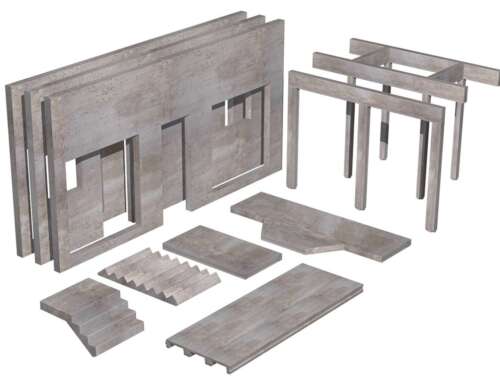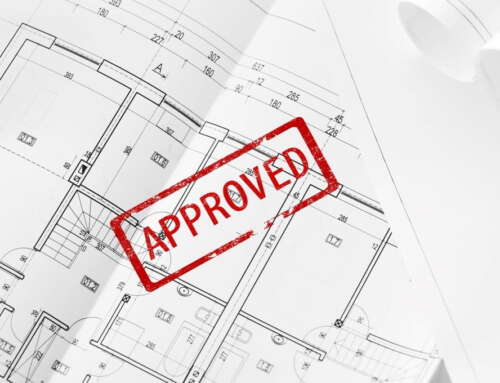Fire Door Regulations in the UK: Areas Requiring Fire Doors

Fire Door Regulation UK and Fire Door Safety is a paramount concern in the United Kingdom, and one crucial element in ensuring safety within buildings is the proper installation and maintenance of fire doors. Fire doors play a vital role in preventing the spread of flames, smoke, and toxic gases in the event of a fire. In this comprehensive guide, we will delve into fire door regulations in the UK and explore the various areas where fire doors are necessary to safeguard lives and property.
Section 1: Understanding Fire Door Regulations
1.1 Regulatory Framework
Fire door regulations in the UK are primarily governed by the Regulatory Reform (Fire Safety) Order 2005, which outlines the responsibilities of building owners and occupiers to ensure that fire safety measures, including fire doors, are in place and maintained.
1.2 British Standards
The specification and testing of fire doors are defined by British Standards. The primary standard is BS 476 Part 22:1987 for timber fire doors and BS EN 1634-1:2014 for metal fire doors. Compliance with these standards ensures that fire doors meet specific fire resistance criteria.
1.3 Legal Responsibilities
Building owners, landlords, and responsible persons are legally obligated to install, maintain, and inspect fire doors to ensure they function correctly. Failure to comply with regulations can lead to legal consequences, including fines and imprisonment.
Section 2: Areas Requiring Fire Doors
2.1 Residential Buildings
2.1.1 Apartment Buildings
In residential buildings such as apartment complexes, fire doors are crucial in providing safe escape routes during a fire. For example, fire doors should be installed in communal areas like corridors, stairwells, and exit routes to contain the fire and prevent its spread.
Example: In a multi-story apartment building, fire doors should be installed in each apartment’s entrance and in communal areas such as corridors and staircases.
2.1.2 Houses in Multiple Occupation (HMOs)
HMOs, which are properties where three or more unrelated individuals share facilities, must comply with strict fire safety regulations. Fire doors are required to ensure the safety of occupants and prevent the rapid spread of fire.
Example: In an HMO property, fire doors should be installed in individual bedrooms, shared kitchens, and communal areas.
2.2 Educational Institutions
2.2.1 Schools and Colleges
Educational institutions house large numbers of students and staff, making fire safety a top priority. Fire doors are installed to create compartmentalization within buildings, containing fires and allowing for safe evacuation.
Example: In a school, fire doors should be installed in classrooms, laboratories, corridors, and assembly halls.
2.2.2 University Dormitories
University dormitories often accommodate hundreds of students. Fire doors are critical in ensuring the safety of residents and limiting the spread of fire in these densely populated buildings.
Example: In a university dormitory, fire doors should be installed in each dormitory room, common areas, and stairwells.
2.3 Healthcare Facilities
2.3.1 Hospitals
Hospitals house patients with varying degrees of mobility and health. Fire doors are essential for protecting patients, staff, and visitors in the event of a fire.
Example: In a hospital, fire doors should be installed in patient rooms, corridors, operating theatres, and other critical areas.
2.3.2 Nursing Homes
Nursing homes cater to elderly residents who may have limited mobility. Fire doors are a necessity to ensure their safety and the ability to evacuate them quickly in an emergency.
Example: In a nursing home, fire doors should be installed in bedrooms, common areas, and exit routes.
2.4 Commercial and Industrial Buildings
2.4.1 Office Buildings
Fire doors are installed in office buildings to compartmentalise fire and smoke, allowing occupants to exit safely. They also protect valuable equipment and documents.
Example: In an office building, fire doors should be installed in offices, corridors, and exit routes.
2.4.2 Factories and Warehouses
In industrial facilities, fire doors are crucial for preventing the spread of fire and protecting workers. They are often used in conjunction with fire-resistant partitions.
Example: In a factory, fire doors should be installed in production areas, storage spaces, and exit routes.
2.5 Public Buildings
2.5.1 Theaters and Cinemas
In entertainment venues, fire doors are essential for the safety of patrons. They are strategically placed to ensure orderly evacuation in the event of a fire.
Example: In a theatre, fire doors should be installed in auditoriums, corridors, and exit routes.
2.5.2 Restaurants and Bars
Fire doors in restaurants and bars help contain fires and protect customers and staff. They are often integrated into the building’s design for aesthetic purposes.
Example: In a restaurant, fire doors should be installed in kitchens, storage areas, and exit routes.
2.6 Specialised Environments
2.6.1 Laboratories
Laboratories often contain flammable chemicals and hazardous materials. Fire doors are installed to prevent the spread of fires that may occur during experiments or accidents.
Example: In a laboratory, fire doors should be installed in chemical storage areas, fume hoods, and corridors.
2.6.2 Prisons and Detention Centers
In correctional facilities, fire doors are necessary for security and safety. They are designed to prevent unauthorised access while ensuring fire safety compliance.
Example: In a prison, fire doors should be installed in cell blocks, common areas, and security zones.
Section 3: Fire Door Maintenance and Inspection
3.1 Regular Inspections
Fire doors must undergo regular inspections by competent persons to ensure they function correctly. Inspections should be conducted at least annually, with records kept as evidence of compliance.
3.2 Repairs and Upkeep
Any damaged or malfunctioning fire doors must be repaired promptly to maintain their effectiveness. Routine maintenance is essential to ensure that fire doors close and latch properly.
3.3 Certification and Testing
Fire doors should bear visible certification marks to indicate compliance with British Standards. They should also undergo periodic testing to verify their fire resistance.
Conclusion
Fire door regulations in the UK are essential for safeguarding lives and property. Fire doors play a critical role in containing fires, allowing safe evacuation, and preventing the spread of flames and smoke. By understanding where fire doors are required and ensuring their proper installation and maintenance, building owners and responsible persons can contribute to a safer built environment in the UK. Compliance with these regulations is not just a legal requirement but a moral obligation to protect the well-being of all occupants and visitors in various settings. Find out more by contacting the Greenlife Contractors team.





